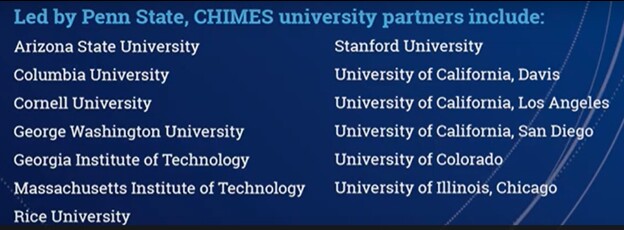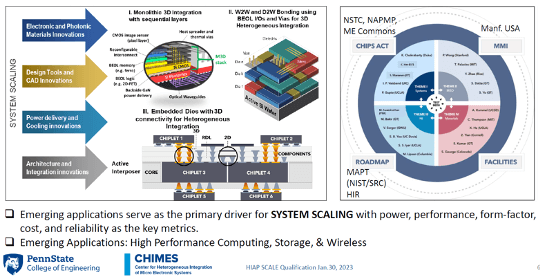 As IFTLE has been reporting for the past few months, monies continue to be poured into the onshore advanced packaging arena. This week, let’s take a look at a new center that has been started by Semiconductor Research Corp (SRC) and the Defense Advanced Research Projects Agency (DARPA) known as CHIMES.
As IFTLE has been reporting for the past few months, monies continue to be poured into the onshore advanced packaging arena. This week, let’s take a look at a new center that has been started by Semiconductor Research Corp (SRC) and the Defense Advanced Research Projects Agency (DARPA) known as CHIMES.
The Semiconductor Research Corporation (SRC)’s Joint University Microelectronics Program 2.0 (JUMP 2.0), a consortium of industrial partners in cooperation with the Defense Advanced Research Projects Agency (DARPA), has just announced the creation of a $32.7 million, Penn State-led Center for Heterogeneous Integration of Micro Electronic Systems (CHIMES).

Madhavan Swaminathan, head of electrical engineering, and William E. Leonhard Endowed Chair at Penn State College of Engineering’s School of Electrical Engineering and Computer Science will direct the center. CHIMES is one of seven centers funded through the JUMP 2.0 initiative for improving the performance, efficiency, and capabilities of electronic systems for emerging commercial and defense applications.
CHIMES has three primary drivers:
- Using system architecture metrics to drive new technologies for the center (application-pull) enabling targeted innovations based on system needs;
- Using technological innovations in the center to enable new system architectures considering system-level tradeoffs across flexible design spaces (technology-push)
- Ensuring portability and scalability of the technology components developed in the center, across diverse applications and platforms. CHIMES is organized into four major themes:
Theme 1: System-Driven Functional Integration & Aggregation
Theme 2: Monolithic 3D (M3D) Densification and Diversification on Silicon Platform
Theme 3: Ultra-Dense Heterogeneous Interconnect and Assembly
Theme 4: Materials Behavior, Synthesis, Metrology and Reliability
Fourteen university partners, shown in Figure 2, will collaborate to advance heterogeneous integration, efficient and effective integration, and packaging of semiconductor devices, chips, and other components.

The following slide describes where Swaminathan sees the CHIMES program going.

SRC /DARPA JUMP 2
SRC and DARPA have selected seven university-run research centers as part of the second iteration of the Joint University Microelectronics Program.
The centers will focus on seven research themes of JUMP 2.0: cognition; communications and connectivity; intelligent sensing to action; systems and architectures for distributed compute; intelligent memory and storage; advanced monolithic and heterogenous integration; and high-performance energy efficient devices.
The seven research centers selected under JUMP 2.0 are:
- Center for Heterogeneous Integration of Micro Electronic Systems, Penn State
- Center for Processing with Intelligent Storage and Memory, University of California San Diego
- Center for the Co-Design of Cognitive Systems, Georgia Institute of Technology
- Center for Ubiquitous Connectivity, Columbia University
- Center on Cognitive Multispectral Sensors, Georgia Tech
- Evolvable Computing for Next Generation Distributed Computer Systems, University of Illinois Urbana-Champaign
- Superior Energy-Efficient Materials and Devices, Cornell University
For all the latest in Advanced Packaging stay linked to IFTLE……………….


















